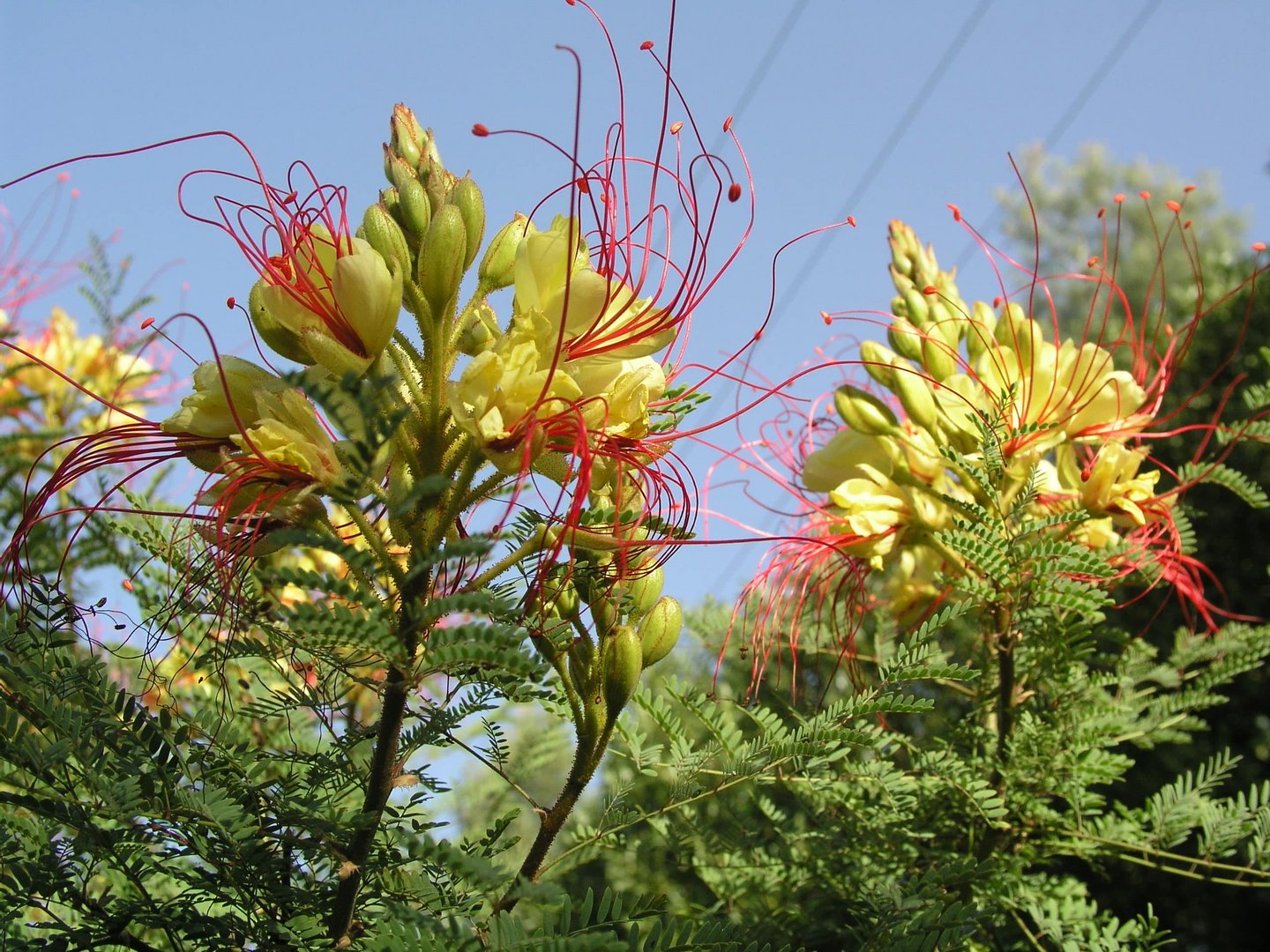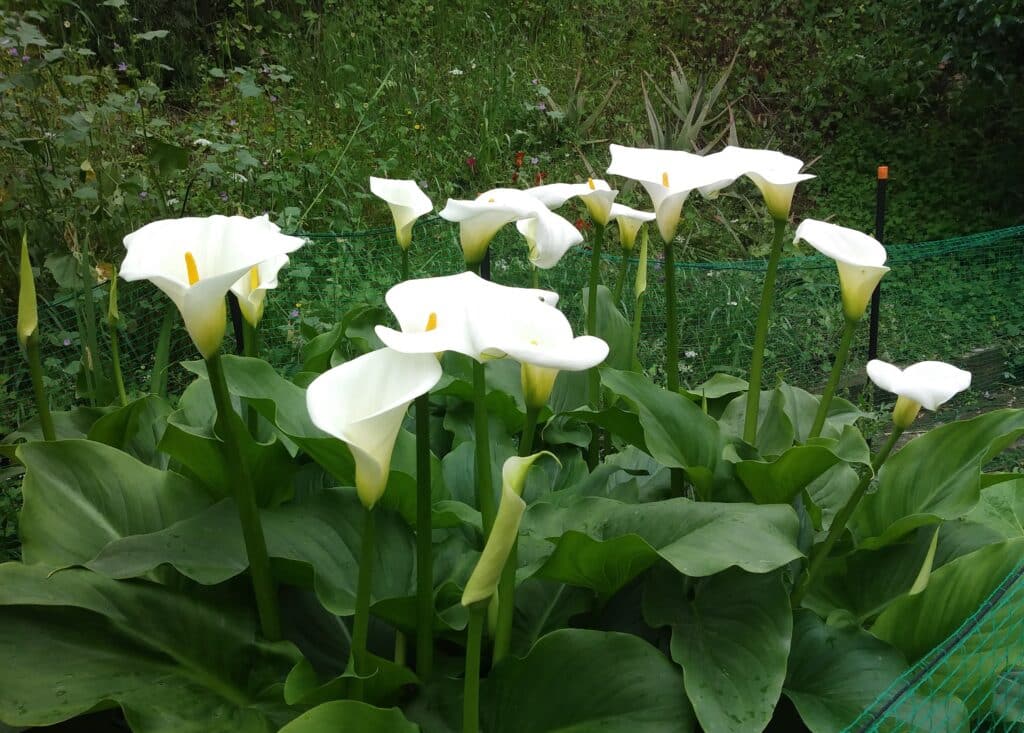Plants must be carefully selected due to our different seasons
When I went to horticultural college over 40 years ago now, my aim was to grow my own shrubs and plants that I could use in the Floral Art part of the course. We had just moved into an old mill cottage and had inherited a ‘non-garden’ with little or no cutting plants to be able to take to the classes, unlike my fellow gardeners. So, I set about creating an interesting garden.
The Floral Art part of the course ranged through the various time flower warps in history starting with minimalist Egyptian funereal decorations, right through to American Colonial, fussy Victorian arrangements, Japanese minimal but meaningful creations and later Continental bunches. I specialised in hostas because of their wonderful forms and colours and my then small collection grew to over 500 different varieties and species in time and became quite famous.
Nowadays in Cyprus I can grow plants that I would never have dreamed that I could ever grow in Northern Europe. Not for cutting I hasten to add, but to give me pleasure as the trees and shrubs each take their turn at flowering and fruiting. Of course, they have to be carefully selected due to our different seasons, particularly those than can come through the colder winters here at 300 metres and yet endure the heat of sometimes 40C in our long summers.
Particular favourites are the blue plumbagos, Leucophylum frutescens, with its silvery leaves and blush-pink flowers and exotic Caesalpinia gillesii where the delicate yellow flowers with long red stamens dance in any summer breeze.
I love to see the leaves of bulbs emerging from the earth after the winter, much earlier than in northern Europe and their flower stems start to appear with dazzling flowers in every hue. I am always amazed when I see the huge clumps of crinkled leaves of acanthus with its spires of white flowers, vying alongside the slender leaves and stunning ethereal flowers of calla lilies, usually just in time for Easter. What wonderful delights the short Cyprus spring garden affords after the cold wet winter we have just endured.
What to do in the garden in March
Some of the early bulbs may be going over so make sure that you dead-head them so that they don’t waste their energy making seeds. Leave the foliage on until the leaves pull off easily and if you need to lift the bulbs, keep them in a dry place until the autumn. Summer bulbs are in the garden centres now for planting later in the month, agapanthus being a particular favourite.
Potted plants could do with being revitalised this month. Plants may become pot-bound over time and whilst the result may be masses of flowers, the plant could flower itself to death! If the roots are protruding through the holes at the bottom of the pot then they should be re-potted into a larger pot. Use a mixture of potting compost and Perlite and perhaps some clean builders’ sand to give the compost weight. Add in some slow-release fertiliser as bought potting composts only have enough nutrients to feed the plants for about 4 or 5 weeks. You can also start to plant up hanging baskets but remember that in high summer they will need to be watered at least twice a day, so hang them where you can easily do this job.
If you have a patch of lawn, scarify it now with a thin-tined rake to get out all the rubbish at the roots. It may have become compacted in which case fork it all over to let some air get into the soil. It will grow quickly even if there is not much rain, but don’t trim it too short or the roots will burn in the increasing heat and you will not have a green sward. In some places, succulents, such as Carpobrotus edulis, have been planted instead of grass. As long as you don’t want to walk or sit on it and only use it as a foil to set off your flower borders, you will achieve a wonderful green effect with very little effort and the bonus of bright pink flowers in the summer.
There are lots of jobs to be getting on with this month including regular feeding of roses and other flowers. There are various rose foods on the market. Roses need a fertiliser something along the lines of 12.11.18. Fertilisers are generally available in a soluble form which can be watered on, or in granules that you fork in around the roots. For potted plants, Phostrogen is a particularly good all-round feed and a capful in 10 litres of water will feed several pots.
When annual seedlings like nigella and cosmos appear, thin them out so that the remainder have room to grow. This applies to vegetables and salad crops as well. Once April is here the you can plant out sweet corn, which should grow well this season, as the soil is wet deep down. I am very choosy about what I spend time, effort and water on these days, so I rarely sow veggie seeds any more, other than broad beans. The time between sowing the seeds and them growing large enough to be able to prick them out is so short here, that I have found that plugs are a much better way of ensuring that they come to harvest. If you use the same area for veggies all the time give it a rest for a few weeks before you plant anything else, and rotate your crops so that you don’t grow the same thing in the same space every season. The short break between seasons is a good time to dig in the contents of your compost bins as well, as it is much better for you and your family than using artificial fertilisers, especially for salad crops.
Pecans may need a dose of zinc chelate at this time. The dosage is 2 dessertspoons in 10 litres of water, watered into the ground about 30cm away from the trunk. Keep watching out for greenfly, blackfly and brown fly on any new foliage in the garden. Spray with a soapy solution or run your gloved fingers up and down the stems to get rid of them. Roses, as you know, also suffer from greenfly and the same remedy can be used for them but watch out for the thorns!
I like to take lots of green cuttings of favourite plants as replacements for when the shrubs and plants age and can usually get five or six to a pot. Sometimes you don’t even need hormone rooting powder to get them to make roots. Tie the pot up in a plastic bag. (I know, but reuse old clean ones!) Check the bottom of the pots to see if there are any white fibrous roots appearing through the holes, which means that they are ready to move up a pot. Gradually introduce them to the outside, as they are still quite vulnerable at this stage.
Plant of the Month – Chasmanthe floribunda
This striking plant, often mis-named as Monbretia in Cyprus, is a member of the Iridaceae family, along with freesias, gladioli and crocuses. This particular part of the iris family, Ixiodeae, mostly originated in Africa. Known sometimes as the African flag, chasmanthe has a flattish corm, which can be as large as 6cm in diameter.
Once planted, they dislike disturbance, although as the clumps expand they need to be dug up and replanted again after a few years. This will result in a lack of flowers until the corms have settled down again, usually after a year. The appearance of tubular orange flowers on the tall stems, occurs in early spring and once the temperatures start to rise above 30C, then the plant starts to fade and the grass-like leaves with their distinctive central fold, begin to turn brown. Whilst they should be cut down here when that happens, in the wild they are usually burned off in veldt fires. In our Cypriot gardens, the corms are tucked down in the earth, thus surviving the great heat of summer.
The seeds, that form along the stems are usually very fertile, and will germinate where they drop around the plant although it will take some years before they produce flowers. When lifting the corms in order to replant, you will notice a net-like casing around them and with a hardened base plate. Carefully lever these off before replanting. All chasmanthe plants like to grow in free draining sandy soil in full sun, so replant any small corms and new seedlings in the same conditions, away from the main grouping, until they are several years old, when they may flower. Once the autumn rains begin to fall, the new shoots will quickly appear to start the cycle over again. As chasmanthe will eventually reach well over a metre in height, staking the group early will keep them upright.









Click here to change your cookie preferences